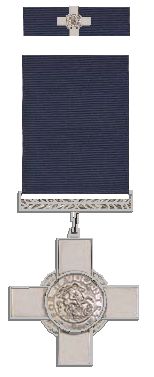Yikes, I couldn't believe it when I just found this - now I am going to find my dad's testimony about Buchenwald....My dad wrote that he gave testimony to Wing Commander Yeo Thomas after Buchenwald was liberated....
F. F. E. Yeo-Thomas
| Tommy Yeo-Thomas | |
|---|---|

Photograph of Yeo-Thomas taken eight hours before he parachuted into occupied France in September 1943
| |
| Birth name | Forest Frederick Edward Yeo-Thomas |
| Nickname(s) | Tommy |
| Born | 17 June 1902 London, England |
| Died | 26 February 1964 (aged 61) Paris, France |
| Allegiance | |
| Service/branch | |
| Rank | Wing Commander |
| Service number | 39215 |
| Unit | Special Operations Executive |
| Battles/wars | Polish-Soviet War Second World War |
| Awards | George Cross Military Cross & Bar Legion of Honour (France) Croix de guerre (France) Cross of Merit (Poland) |
Wing Commander Forest Frederick Edward "Tommy"[1] Yeo-Thomas GC, MC & Bar (17 June 1902 – 26 February 1964) was a British Special Operations Executive (SOE) agent in the Second World War. Codenamed "SEAHORSE" and "SHELLEY" in the SOE, Yeo-Thomas was known by the Gestapo as "The White Rabbit". His particular sphere of operations was Occupied and Vichy France.
Contents
[hide]Life and career[edit]
Early life[edit]
Forest Frederick Edward Yeo-Thomas was born in London to John Yeo Thomas, a coal merchant, and Daisy Ethel Thomas (born Burrows). Early in his life, his family moved to Dieppe, France. He spoke both English and French fluently. He saw action in the Polish-Soviet War of 1919–1920, fighting alongside the Poles. He was captured by the Soviet Russian forces, and avoided execution by escaping, in the process strangling a Soviet guard.
Life as an agent[edit]
Between the wars, Yeo-Thomas worked for Molyneux, a successful fashion-house in Paris. After the fall of France and the chaotic evacuation at Dunkirk in 1940, he escaped back to England, where he initially worked as an interpreter for de Gaulle's Free French forces. He was quickly prised away from de Gaulle by the British Special Operations Executive (SOE), a newly formed intelligence and subversion organization. He had enlisted in the RAF but was soon made an officer.
At first Yeo-Thomas worked in an administrative capacity, but SOE soon used him as a liaison officer with the Bureau Central de Renseignements et d'Action (BCRA), the Free French intelligence agency. He was parachuted into occupied France for the first time on 25 February 1943.[2] Both within France and back in England, Yeo-Thomas forged links with Major Pierre Brossolette and Andre Dewavrin (who went under the codename "Colonel Passy"), and between them they created a strategy for obstructing the German occupation of France. During his missions in France, he dined with prolific and infamous Nazis, such as Klaus Barbie who was known as the 'Butcher of Lyon', to gather vital information, before returning to France on 17 September 1943.[3] He was appalled by the lack of logistical and material support which the French resistance movements such as the maquis were receiving, to the extent that he begged five minutes with Winston Churchill, the British Prime Minister. Churchill, reluctant at first, but fascinated by what Yeo-Thomas told him, agreed to help him obtain resources for the resistance.
In February 1944, Yeo-Thomas was parachuted into France after flying from RAF Tempsford. However, he was betrayed and captured at the Passy metro station in Paris. In endeavouring to hide his true identity, Yeo-Thomas claimed he was a British pilot named Kenneth Dodkin. He was then taken by the Gestapo to their headquarters at Avenue Foch and subjected to brutal torture, including repeated submersion in ice-cold water (each time to the point that artificial respiration was required to bring him back to consciousness), innumerable physical beatings, and electric shocks applied to the genitals. Held in Fresnes prison, he made two failed attempts to escape and was transferred first to Compiègne prison and then to Buchenwald concentration camp. Within the camp, he began to organize resistance, and again made a brief escape. On his recapture, he passed himself off as a French national and was sent to a prisoner-of-war camp, Stalag XX-B,[4] near Marienburg.[5]
While at Buchenwald, Yeo-Thomas met Squadron leader Phil Lamason, the officer in charge of 168 Allied airmen being held there. At great risk, Yeo-Thomas assisted Lamason in getting word out of camp to the German Luftwaffeof the airmen's captivity, knowing that the Luftwaffe would be sympathetic to their situation. He had to don many disguises, as well as shooting an enemy agent point blank with a pistol to escape. Eventually he succeeded and reached Allied lines in late April 1945.[3]
After the war[edit]
After the war, Yeo-Thomas was to be an important witness at the Nuremberg War Trials in the identification of Buchenwald officials. He was a key prosecution witness at the Buchenwald Trial held at Dachau Concentration Camp between April and August 1947. At this trial, 31 members of the Buchenwald staff were convicted of war crimes. He was also a surprise defence witness in the war crimes trial of Otto Skorzeny, particularly on the charge of Skorzeny's use of American uniforms in infiltrating American lines. Yeo-Thomas testified that he and his operatives wore German uniforms behind enemy lines while working for the SOE.
He died at the age of 61 in his Paris apartment following a massive haemorrhage. He was cremated in Paris and then subsequently repatriated to be interred in Brookwood Cemetery, Surrey, where his grave can be found in the Pine Glade Garden of Remembrance. In March 2010 his life was commemorated with an English Heritage blue plaque erected at his flat in Queen Court where he lived in Guilford Street, Camden, Central London.[6][7]
George Cross citation[edit]
The London Gazette 15 February 1946 citation read:[8]



